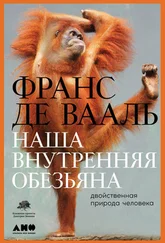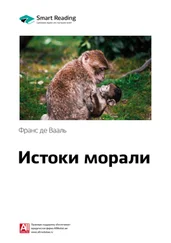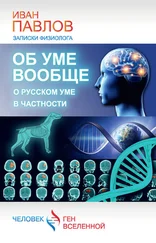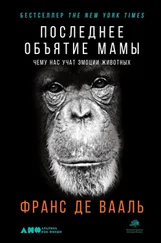Plotnik, J. M., F. B. M. de Waal, and D. Reiss. 2006. Self-recognition in an Asian elephant. Proceedings of the National Academy of Sciences USA 103: 17053–57.
Plotnik, J. M., R. C. Lair, W. Suphachoksakun, and F. B. M. de Waal. 2011. Elephants know when they need a helping trunk in a cooperative task. Proceedings of the Academy of Sciences USA 108:516–21.
Pokorny, J., and F. B. M. de Waal. 2009. Monkeys recognize the faces of group mates in photographs. Proceedings of the National Academy of Sciences USA 106:21539–43.
Pollick, A. S., and F. B. M. de Waal. 2007. Ape gestures and language evolution. Proceedings of the National Academy of Sciences USA 104:8184–89.
Povinelli, D. J. 1987. Monkeys, apes, mirrors and minds: The evolution of self-awareness in primates. Human Evolution 2:493–509.
–. 1989. Failure to find self-recognition in Asian elephants ( Elephas maximus ) in contrast to their use of mirror cues to discover hidden food. Journal of Comparative Psychology 103:122–31.
–. 1998. Can animals empathize? Scientific American Presents: Exploring Intelligence 67:72–75.
–. 2000. Folk Physics for Apes: The Chimpanzee's Theory of How the World Works. Oxford: Oxford University Press.
Povinelli, D. J., et al. 1997. Chimpanzees recognize themselves in mirrors. Animal Behaviour 53:1083–88.
Premack, D. 2007. Human and animal cognition: Continuity and discontinuity. Proceedings of the National Academy of Sciences USA 104:13861–67.
–. 2010. Why humans are unique: Three theories. Perspectives on Psychological Science 5:22–32.
Premack, D., and A. J. Premack. 1994. Levels of causal understanding in chimpanzees and children. Cognition 50: 347–62.
Premack, D., and G. Woodruff. 1978. Does the chimpanzee have a theory of mind? Behavioral and Brain Sciences 4:515–26.
Preston, S. D. 2013. The origins of altruism in offspring care. Psychological Bulletin 139:1305–41.
Price, T. 2013. Vocal Communication within the Genus Chlorocebus : Insights into Mechanisms of Call Production and Call Perception. Unpublished thesis, Univerity of Göttingen, Germany.
Prior, H., A. Schwarz, and O. Güntürkün. 2008. Mirror-induced behavior in the magpie ( Pica pica ): Evidence of self-recognition. Plos Biology 6: e202. Proctor, D., R. A. Williamson, F. B. M. de Waal, and S. F. Brosnan. 2013. Chimpanzees play the ultimatum game. Proceedings of the National Academy of Sciences USA 110: 2070–75.
Proust, M. 1913–27. Remembrance of Things Past , vol. 1, Swann's Way and Within a Budding Grove. New York: Vintage Press.
Pruetz, J. D., and P. Bertolani. 2007. Savanna chimpanzees, Pan troglodytes verus, hunt with tools. Current Biology 17:412–17.
Raby, C. R., D. M. Alexis, A. Dickinson, and N. S. Clayton. 2007. Planning for the future by western scrub-jays. Nature 445:919–21.
Rajala, A. Z., K. R. Reininger, K. M. Lancaster, and L. C. Populin. 2010. Rhesus monkeys ( Macaca mulatta ) do recognize themselves in the mirror: Implications for the evolution of self-recognition. Plos ONE 5: e12865.
Range, F., L. Horn, Z. Viranyi, and L. Huber. 2008. The absence of reward induces inequity aversion in dogs. Proceedings of the National Academy of Sciences USA 106:340–45.
Range, F., and Z. Virányi. 2014. Wolves are better imitators of conspecifics than dogs. Plos ONE 9: e86559.
Reiss, D., and L. Marino. 2001. Mirror self-recognition in the bottlenose dolphin: A case of cognitive convergence. Proceedings of the National Academy of Sciences USA 98:5937–42.
Roberts, A. I., S.-J. Vick, S. G. B. Roberts, and C. R. Menzel. 2014. Chimpanzees modify intentional gestures to coordinate a search for hidden food. Nature Communications 5:3088.
Roberts, W. A. 2012. Evidence for future cognition in animals. Learning and Motivation 43:169–80.
Rochat, P. 2003. Five levels of self-awareness as they unfold early in life. Consciousness and Cognition 12:717–31.
Röell, R. 1996. De Wereld van Instinct: Niko Tinbergen en het Ontstaan van de Ethologie in Nederland (1920–1950). Rotterdam: Erasmus.
Romanes, G. J. 1882. Animal Intelligence. London: Kegan, Paul, and Trench.
–. 1884. Mental Evolution in Animals. New York: Appleton.
Sacks, O. 1985. The Man Who Mistook His Wife for a Hat. London: Picador. Saito, A., and K. Shinozuka. 2013. Vocal recognition of owners by domestic cats ( Felis catus ). Animal Cognition 16:685–90.
Sanz, C. M., C. Schöning, and D. B. Morgan. 2010. Chimpanzees prey on army ants with specialized tool set. American Journal of Primatology 72: 17–24.
Sapolsky, R. 2010. Language. May 21, http://bit.ly / 1BUEv9L.
Satel, S., and S. O. Lilienfeld. 2013. Brain Washed: The Seductive Appeal of Mindless Neuroscience. New York: Basic Books.
Savage-Rumbaugh, S., and R. Lewin. 1994. Kanzi: The Ape at the Brink of the Human Mind. New York: Wiley.
Sayigh, L. S., et al. 1999. Individual recognition in wild bottlenose dolphins: A field test using playback experiments. Animal Behaviour 57:41–50.
Schel, M. A., et al. 2013. Chimpanzee alarm call production meets key criteria for intentionality. Plos ONE 8: e76674.
Schusterman, R. J., C. Reichmuth Kastak, and D. Kastak. 2003. Equivalence classification as an approach to social knowledge: From sea lions to simians. In Animal Social Complexity , ed. F. B. M. de Waal and P. L. Tyack, 179–206. Cambridge, MA: Harvard University Press.
Semendeferi, K., A. Lu, N. Schenker, and H. Damasio. 2002. Humans and great apes share a large frontal cortex. Nature Neuroscience 5:272–76.
Sheehan, M. J., and E. A. Tibbetts. 2011. Specialized face learning is associated with individual recognition in paper wasps. Science 334:1272–75.
Shettleworth, S. J. 1993. Varieties of learning and memory in animals. Journal of Experimental Psychology: Animal Behavior Processes 19:5–14.
–. 2007. Planning for breakfast. Nature 445:825–26.
–. 2010. Q&A. Current Biology 20: R910–11.
–. 2012. Fundamentals of Comparative Cognition. Oxford: Oxford University Press.
Siebenaler, J. B., and D. K. Caldwell. 1956. Cooperation among adult dolphins. Journal of Mammalogy 37:126–28.
Silberberg, A., and D. Kearns. 2009. Memory for the order of brief ly presented numerals in humans as a function of practice. Animal Cognition 12:405–7.
Skinner, B. F. 1938. The Behavior of Organisms . New York: Appleton-Century-Crofts.
–. 1956. A case history of the scientific method. American Psychologist 11:221–33.
–. 1969. Contingencies of Reinforcement. New York: Appleton-Century-Crofts.
Slocombe, K., and K. Zuberbühler. 2007. Chimpanzees modify recruitment screams as a function of audience composition. Proceedings of the National Academy of Sciences USA 104:17228–33.
Smith, A. 1976 [orig. 1759]. A Theory of Moral Sentiments , ed. D. D. Raphael and A. L. Macfie. Oxford: Clarendon.
Smith, J. D., et al. 1995. The uncertain response in the bottlenosed dolphin ( Tursiops truncatus ). Journal of Experimental Psychology: General 124:391–408.
Sober, E. 1998. Morgan's canon. In The Evolution of Mind , ed. D. D. Cummins and Colin Allen, 224–42. Oxford: Oxford University Press.
Soltis, J., et al. 2014. African elephant alarm calls distinguish between threats from humans and bees. Plos ONE 9: e89403.
Читать дальше
Конец ознакомительного отрывка
Купить книгу
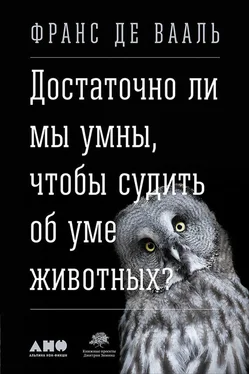
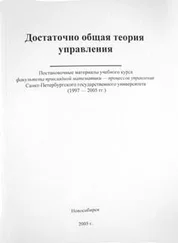



![Франс Вааль - Последнее объятие Мамы [litres]](/books/406055/frans-vaal-poslednee-obyatie-mamy-litres-thumb.webp)

